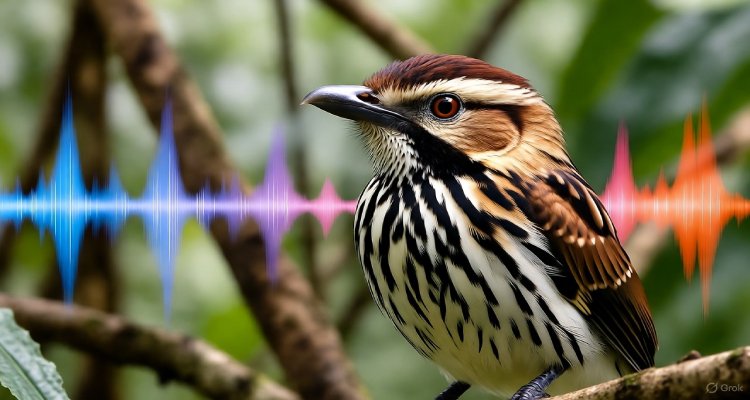Why Some Birds Sing in Frequencies Humans Shouldn’t Hear
Some birds communicate in frequencies too high or low for the human ear. Scientists now reveal why evolution shaped these unheard melodies and what they reveal about ecosystems.
The Hidden Songs of Nature
At dawn, the forest seems alive with music, yet much of the concert escapes our ears. While humans can hear sounds roughly between 20 Hz and 20,000 Hz, many birds communicate outside these limits. Recent studies show several species use ultrasonic or infrasonic frequencies—songs we cannot perceive—to signal, evade predators, or navigate complex social dynamics. The discovery sheds light on a hidden dimension of avian life that has been unfolding beyond human awareness for millennia.
How Scientists Discovered the Unheard Songs
Researchers from Cornell University’s Ornithology Lab, partnered with acoustic ecologists in Australia and India, recently used high-frequency microphones to record bird calls far beyond the human auditory range. By slowing the recordings down, they uncovered elaborate patterns of chirps and trills hidden in what once sounded like silence.
The most striking findings came from tropical rainforests and dense mangroves, where sound competition among species is fierce. Birds like the mottled swiftlet and certain nightjars emitted ultrasonic pulses—above 20 kHz—to communicate in acoustically cluttered environments. Others, like pigeons and cassowaries, produced infrasonic hums under 20 Hz, enabling their calls to travel over long distances through dense forest.
Why the Frequency Shift Matters
In ecology, communication isn’t just about being heard—it’s about being understood by the right audience. The evolution of ultrasonic and infrasonic signaling offers unique advantages. High frequencies are sharp, private, and easily masked from predators with limited hearing capabilities. Low frequencies, on the other hand, can travel miles across terrain and can serve to mark territory or locate mates.
Experts believe that as environments grew noisier—both naturally and through human activity—some birds adapted their vocal ranges to bypass noise pollution. For species that thrive near urban centers, such as the Eurasian wren or American robin, there’s evidence of shifting vocal frequencies to avoid interference from human-generated sound frequencies.
The Science Behind the Silence
Human ears perceive waves based on their oscillation per second, measured in hertz. Ultrasound frequencies are too fast; infrasound too slow. Birds capable of producing such sounds do so using syrinxes—vocal organs far more precise than mammalian larynxes. Some can control two separate tones simultaneously, allowing complex harmonies undetectable in human perception.
Dr. Meera Krishnan, an avian acoustics specialist at the Indian Institute of Science, explains, “Birds exploit frequency space like a painter uses color. Humans see only one range on the spectrum, but nature operates in multiple palettes. These silent songs tell us that we’ve been missing half the conversation in the skies.”
Ecological Implications and Conservation Value
Understanding these frequencies opens exciting doors for conservation. Acoustic monitoring technologies can now detect bird populations without requiring visual confirmation—even in dense forests or remote habitats. For endangered species like the Sumatran ground cuckoo, whose calls fall below human hearing, these new tools could revolutionize how scientists track and protect them.
Yet, this discovery also reveals an alarming footprint of noise pollution. Urban noise, industrial machinery, and deforestation-related sounds distort natural soundscapes. In areas with heavy human presence, birds dependent on specific frequency bands lose their ability to communicate effectively, leading to reduced mating success and disruptions in population stability.
Expert Voices and the Cultural Echo
Environmental philosopher Dr. Alan Torres notes that this research carries deeper meaning: “The fact that entire worlds of sound exist beyond human comprehension challenges our assumption of dominance. These birds remind us that human perception isn’t the measure of all reality.”
Public fascination with this discovery has grown through viral clips of slowed-down bird calls shared by wildlife photographers. Many found the recordings hauntingly beautiful—ghostly songs that humans were never meant to hear, yet which had been shaping ecosystems all along.
Looking Beyond Human Hearing
Scientists now explore whether similar frequency adaptations exist in other species—bats, whales, and even insects. Cross-disciplinary studies could lead to bio-inspired sound technologies or new ecological sensors that mimic avian communication systems. The line between biology and engineering continues to blur as we learn from the animals that mastered sound long before us.
Conclusion: Listening to the Unheard
In a world saturated with visible and audible noise, this revelation reminds us of the unseen complexity of nature. The birds singing beyond our reach tell a story of adaptation, evolution, and survival. Their silence to us is not absence, but mystery—a parallel symphony woven through time.
As technology expands human hearing beyond its biological limits, one truth remains: the forest is never quiet. We just haven’t been listening correctly.
Disclaimer: This article is based on scientific research and ecological studies available as of 2025. Observations and expert quotes are used for illustrative and educational purposes; readers should consult primary scientific sources for detailed findings.











